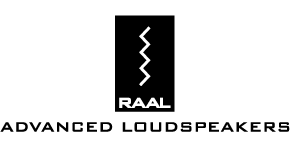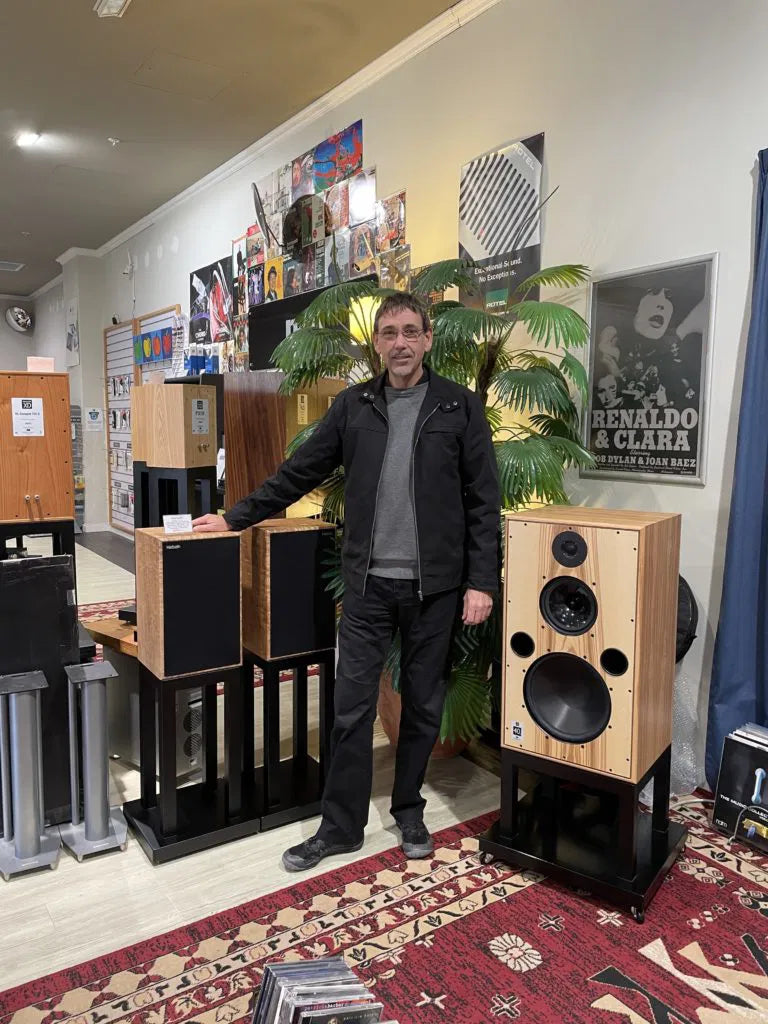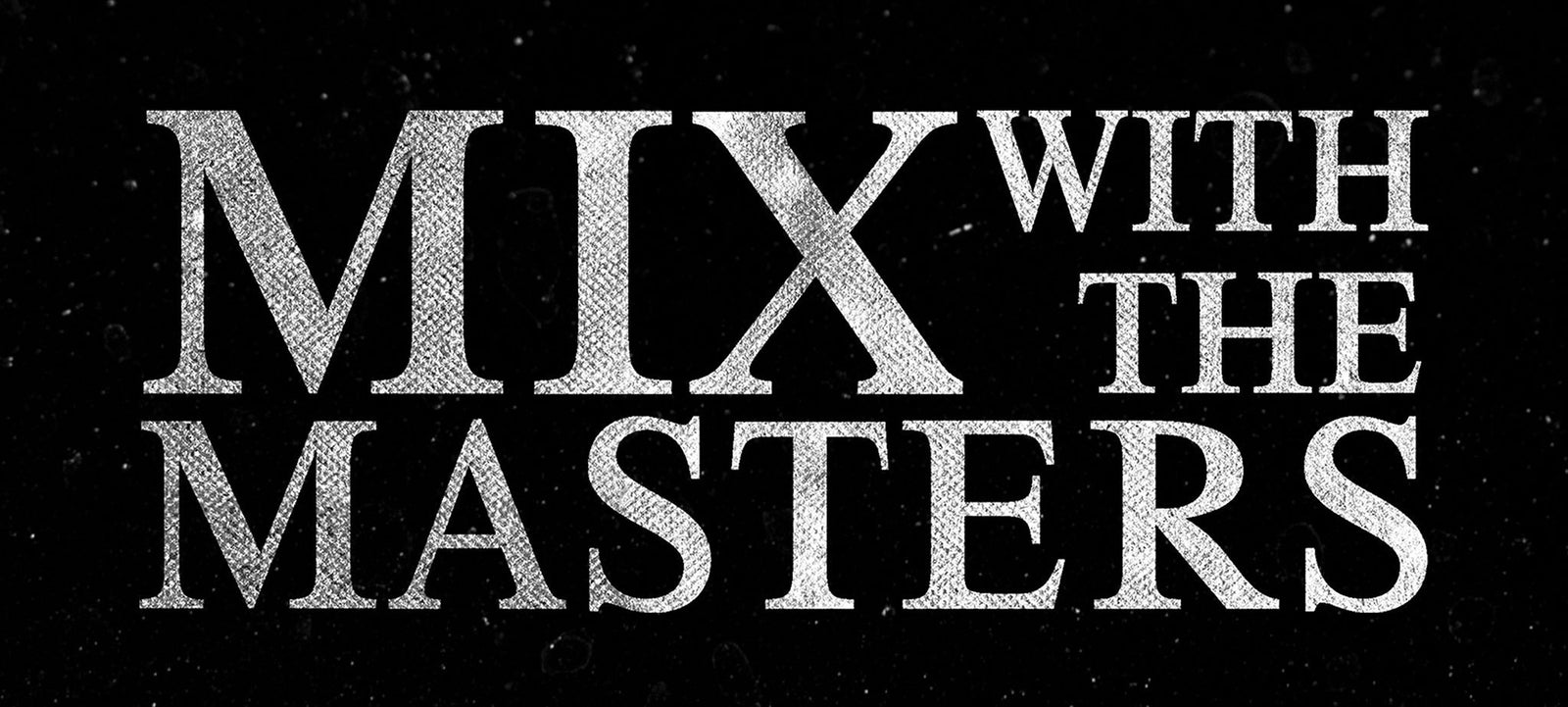Buy one component and save 10% on up to 2 cables. Buy 2 components and get 4 free cables. Free shipping on USA orders over $700. We are closed 12/25 and 12/26.
Buy one component and save 10% on up to 2 cables. Buy 2 components and get 4 free cables. Free shipping on USA orders over $700. We are closed 12/25 and 12/26.
AHB2 Review - Aleksander Radisavljevic, RAAL Advanced Loudspeakers
by Benchmark Media Systems December 16, 2016

"I Took a Leap of Faith"
It's not the first time I've heard Error-Correction amplifiers, but those were prototypes that weren't working all too well. Classic feedback, TIM-free design was better, so I was afraid that AHB2 might be “wrong” somehow. It took a little bit of “leap-of-faith” to buy one, but I could not ignore the advice I was given about it, as it was given by people that are insiders in this Audio industry of ours. I'm happy to say that my thoughts of Error Correction approach being maybe wrong, could not be farthest from the truth.
AHB2 - "End of the Journey"
What can I say ... maybe the shortest way to summarize it would be this: the AHB2 is the end of the journey for me. I have no desire for ever going back to typical multi-thousand Dollar High-End amplifiers.
"Absolute Clarity ... No Plateau of Performance"
It took a few days to digest it. This absolute clarity was something I've never heard before. It was close, but not like this. It isn't impressive in any particular category, it is the absolute master of all of them.
All amplifiers before were reaching the plateau of performance at some point. You can quickly find the best (compromise) volume level between power and it's own inherent level of clarity, between its body and soul.
Once you find that plateau, you will have to revert the volume back about 6dB to make sure that the transients won't get dirty. Volumes have been written on clipping behaviour of amplifiers and sadly, even “TIM-free” designs won't really let you hear a hardly struck piano key without some dirt, significantly before their clipping level.
"Feedback can get Confused by Dense Signals"
Simply, feedback gets confused with dense signals and the amp's open loop gain will get unleashed and the clipping will be reached before it should.
Maybe that wouldn't be any hard clipping, but certainly a lot of IMD will happen a bit too soon on such densely packed signals...
"The AHB2 Doesn't get Confused"
The AHB2 is completely free of this. It has no plateau of performance. It doesn't get confused by anything, at any power level and it's inherent level of clarity is on par not with power amps, but with the best of the best headphone amplifiers (that usually work with levels of voltage and current that are far below their capability).
I can't but not conclude that Benchmark isn't telling us everything about it's performance. I bet that TIM on this amp is so low that it is unreachable to classic negative feedback controlled amps of whatever TIM management approach.
What that gave me as a listener?...But first, the technicalities;
Using the AHB2 to Voice Speakers at RAAL
I could immediately sort out a few dilemmas I had about my speaker's crossover, about it's voicing, about some cables...After 20+ years in very serious exploration of Audio, I still thought that some flaws were inherent to such-and-such driver type, such-and-such crossover type, etc., counteracting all that with precisely balancing the voicing of the speaker.
Well, not that I'll become sloppy with speaker voicing in the future, but voicing now is not any more a matter of make-or-break the sound. It's more of a matter that if I would listen a live Jazz trio, I wouldn't mind if the drummer hits a cymbal a bit too hard, or that I'm sitting too close to the guitar amp, or if the Bass player has an instrument that sounds too wooly for my taste...
Speaker voicing was a constant battle between getting a maximum amount of liveliness out of the speaker, with minimum amount of shouting, then, maximum openness without getting the highs too hot.
Now, small changes in levels are just that. If I crank up the tweeter for 1dB, the highs don't become too hot any more. It's just that the triangle is coming a bit more forward than where it should be, or that the cymbals are not aligned with the rest of the drum set, like someone moved their stands a bit closer to me...
The voicing is now more of the matter of getting the spatial cues right than balancing some upper-midrange aggressiveness (or excessive smoothness with Tube amps).
"What the AHB2 Gave Me as a Listener"
As a listener, I got to follow the partition of baritones in a Choire all the way, I got to hear the dynamics of a Piano as it is in real life, I got to hear my own High-Res recordings of acoustical guitars and percussion with the same atmosphere that I remember was there when it was recorded, I got to easily follow anything I want to pay attention to, or I can just enjoy the musical moment as if I were right then and there...I mean, not that most of this could not happen before, but it wasn't happening at this level of realism.
"Deflated Balloons"
I did put back my top-dollar reference amps to hear the difference and the difference was that the balloon just got deflated. They weren't bad, of course, but they were deflated balloons made of lots of metal and various audio-gold parts inside. It is like seeing Madeleine Stowe in the room full of Pamela Anderson clones. I could go on and on about it...
"Shining with Justice to the Music"
AHB2 has the best highs I've ever heard in my life, it has the best bass, it has the best midrange. Not the most expressive, most organic, most illuminating, most fitting to any High-End system as the owner imagines it, just the best, shining with justice to the music.
Negative Feedback - "Running Around in Circles"
It seems to me that pursuing the NFB power amplifier design has now become a discipline for running around inside the same circle, where there are no unexplored paths. Whatever you do, someone already did it. You can just hope that "better" devices come out, with some characteristics that fits your style/approach better.
The margin of quality of such amps (even with taking "exotic" measures for managing crossover distortion), was fulfilled long ago. There will be no substantial improvements to that sound, though I'm sure they will continue to reign supreme in the minds of most audiophiles.
Class-D - "I Never got Hooked on it"
Class-D entered the big stage a while ago, but I never got hooked on it. It's all nice and clean, but to me, Class-D lacks resolution of low level signal (that is, if it doesn't ignore it completely).
AHB2 - "A Step Out of that Circle of Sameness"
AHB2 is a step out of that circle of “sameness” and a long step in the right direction. The new era has begun. There is no other way that this will end in 100 years. There will be Tube amps exotica and there will be Class-D and there will be solid state amps with Feed-Forward Error Correction and just the right amount of NFB to allow the proper integration of FFEC. Or maybe some other form of EC circuits. And with a power supply as in AHB2.
"NFB-only Amplifiers will be remembered ... like large vintage radios"
Remember Quasi-Complimentary amplifiers? That's how NFB-only amplifiers will be remembered 50 years from now. They will, however, have huge ornamental value and will be greatly admired for it, like I admire large vintage wooden radios.
I am very grateful to Benchmark people for doing this and selling it for the money they do.
If there will ever be an AHB3, sign me up please, but it is hard to imagine what could be better than this.

Aleksandar Radisavljević, Founder and Director of RAAL
Also in Reviews
HPA4 Review - AP Mastering
by Benchmark Media Systems September 26, 2025
"This is the best headphone amplifier that I have ever tested. In every conceivable metric, absolutely perfect."
"If you've got the money and you want something that is an engineering masterpiece, this is such a thing."
- AP Mastering

Benchmark System Review - Ricky Dasler, Living Sound, New Zealand
by Benchmark Media Systems July 22, 2025
"With over 40 years as an audiophile and more than half those years as a hi-fi retailer, I feel I’ve finally put together a stereo that ticks all my sonic boxes. Those being in order of priority, dynamics, scale, tonal accuracy, fatigue free resolution and soundstage."
"For the last 25 years I’ve been fortunate to have a dedicated listening room. I use acoustic treatments from Real Traps, Vicoustic and Primeacoustic."
"My Benchmark components consist of the DAC3 B (connected to a Naim NDS streamer), LA4 line amplifier and two AHB2 power amplifiers run in bridged mono mode. All cables are Benchmark too."
"The Benchmark gear in my system has brought what I have wanted in my list of sonic priorities as listed above and then some. They have delivered way beyond what I thought could be possible in my system in my room."
"I’m delighted and stunned daily as my vast music collection comes to life on a whole new level."
- Ricky Dasler, Living Sound, Nelson New Zealand.

Benchmark Converters at Abbey Road - Geoff Pesche
by Benchmark Media Systems June 02, 2025
"What are the Latest Advancements in Mastering?"
"Geoff Pesche weighs in on how the mastering team at Abbey Road Studios achieve first-class results." - Mix with the Masters
"The biggest sonic improvement in mastering in the last 5 or 6 years is D/A and A/D converters and that's very very important - what you have at the front and the back of the chain."
"We use fairly new Benchmark converters front and back."
"Abbey Road like a uniformity between the rooms so all of the rooms have the same A/D and D/A conversion."
- Geoff Pesche, Mastering Engineer, Abbey Road Studios



